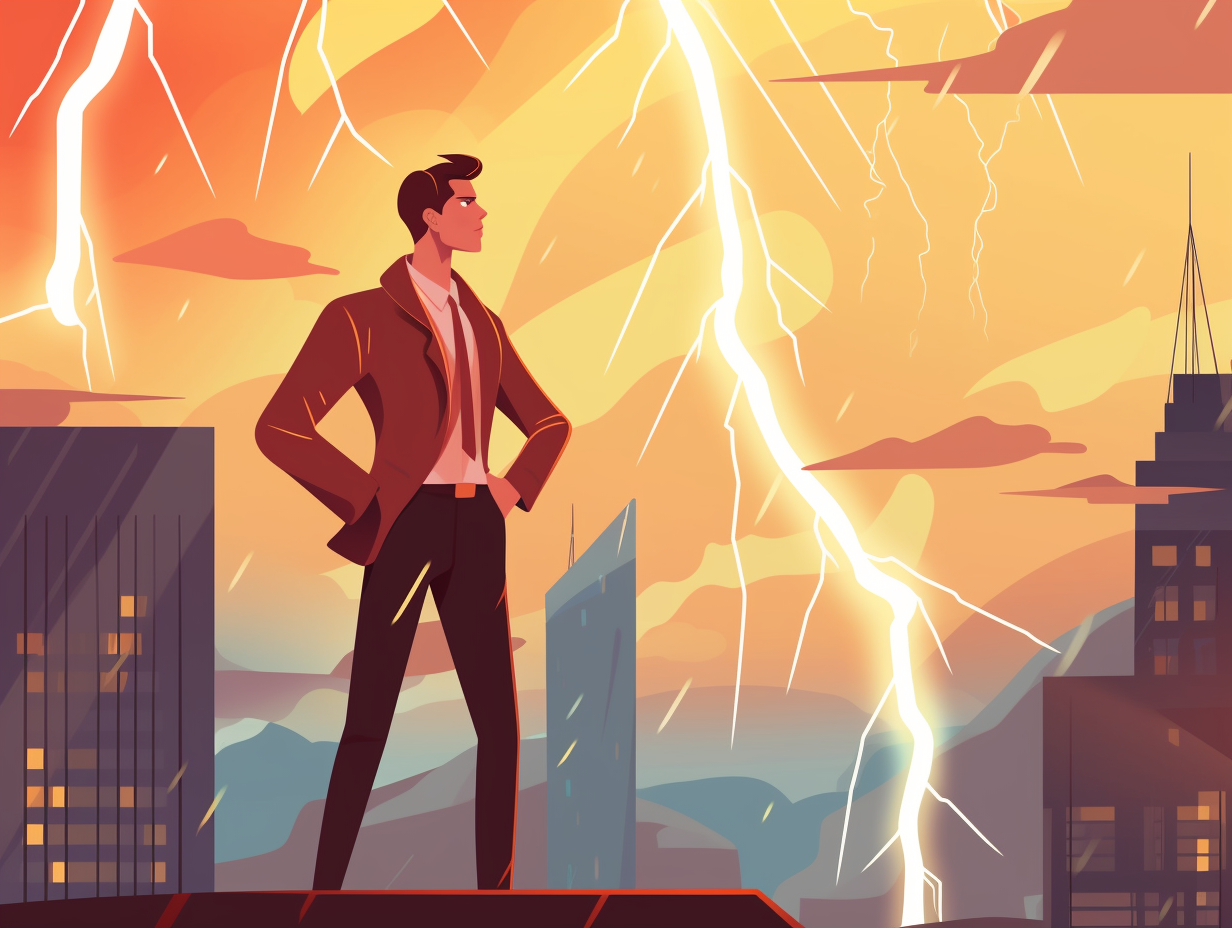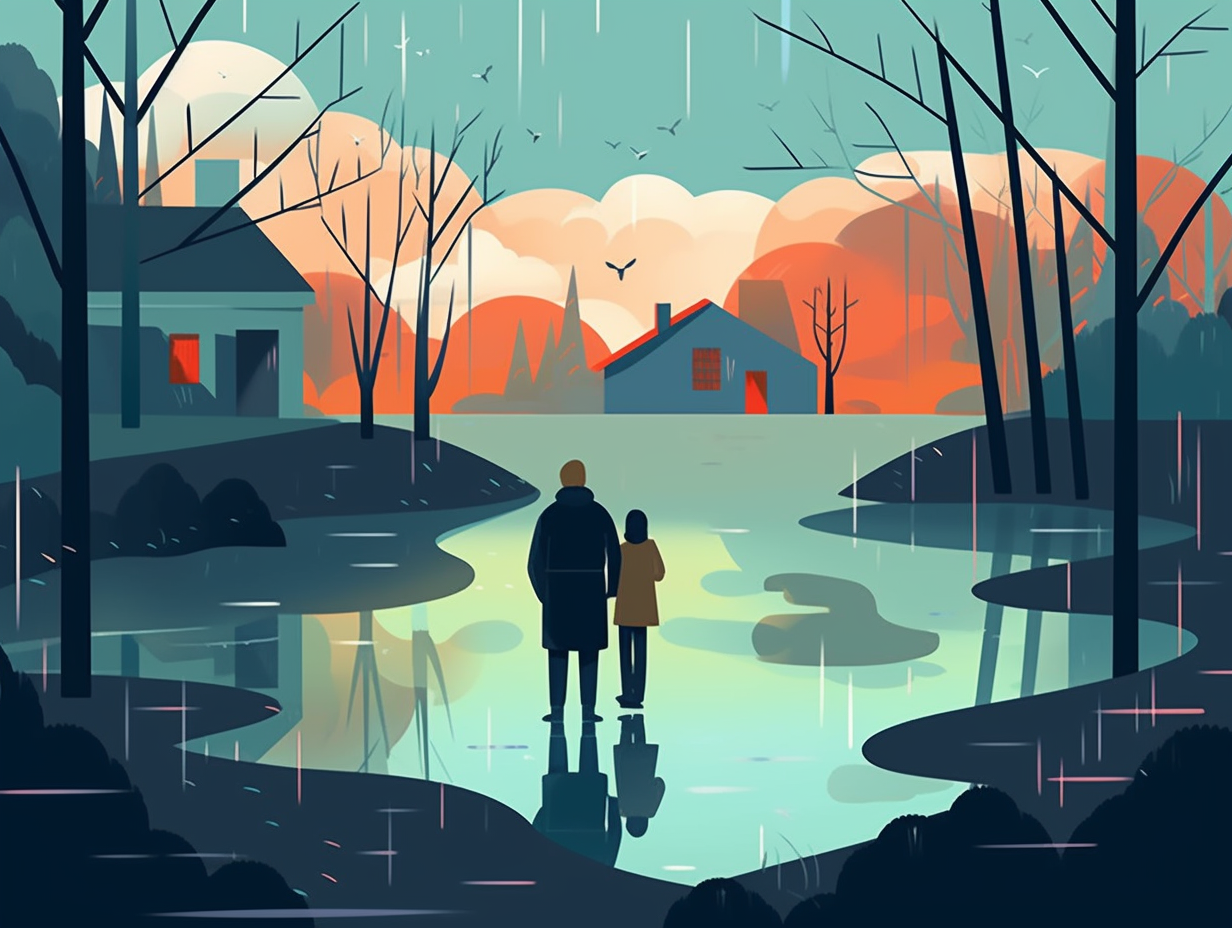Sky High Secrets: 11 Amazing Fun Facts About Earth's Atmosphere!

1. Earth's Burrito Blanket
If the Earth were a burrito, its atmosphere would be its steamy blanket, keeping all the juicy filling cozy and warm: Our planet's atmosphere contains greenhouse gases like carbon dioxide, methane, and water vapor that trap light and heat, maintaining a comfortable temperature balance for life on Earth – but too much heat can make Earth's burrito a little too spicy, leading to climate change.
Source => climate.mit.edu
2. Meteoroids vs. Atmosphere
When meteoroids play "The Floor is Lava" with Earth's atmosphere, it's the atmosphere that's the real winner: As meteoroids make their way through our sky, they collide with air molecules, which drastically reduces their velocity from blazing speeds of up to 72,000 m/s (161,000 mph) to just a few hundred meters per second – all thanks to the strategic air resistance.
Source => spaceacademy.net.au

Did you know that Earth has its own "solar bouncer" to protect us from harmful sun rays? The ozone layer is our natural SPF, shielding everything from marine life to sunburn-prone humans! Discover more amazing facts about our atmosphere's crucial superhero.
=> Fun Facts about Air
3. Atmosphere's Poker Face
The atmosphere may not be as emotionally compromised as we thought, bravely holding back its tears with an unwavering poker face in response to our relentless pollution-generating antics: Turns out, the concentration of hydroxyl radicals, which act as natural air scrubbers by breaking down pollutants like methane, has remained stable worldwide recently, suggesting that the atmosphere's self-cleaning abilities aren't as affected by environmental changes as previously believed. However, this is no encouragement to keep befouling our skies; reducing emissions and our carbon footprints is still paramount for Earth's well-being.
Source => mpg.de
4. Thermosphere: Hot but Cold
If the thermosphere were your morning coffee, it'd probably melt your cup and boil away in seconds: With temperatures reaching up to 2,000° C (3,632° F), this atmospheric layer is hotter than a sunburnt kangaroo on a barbecue! However, to humans, it feels colder than a polar bear's toenails, due to its thin air, and it's also responsible for nature's disco, the auroras or Northern and Southern Lights.
Source => scied.ucar.edu

5. Jet Streams: Sky Highways
Hold on to your hats, folks, we're about to go jet-setting in the sky: Jet streams, those invisible high-altitude highways, whip through the atmosphere at speeds of up to 275 mph and stretch hundreds of miles wide and thousands of feet high. These atmospheric autobahns play follow the leader with the boundaries of hot and cold air, putting the pedal to the metal in both Northern and Southern Hemispheres, and getting extra revved up when winter's icy grip takes hold.
Source => weather.gov
6. Density Wars: Earth vs. Venus vs. Mars
In a shocking turn of events, Earth's atmosphere throws in the towel and admits defeat in the Density Wars: it weighs in at a feather-light 5.3 x 10^21 grams, giving up its title to Venus' Hulk-like 4.3 x 10^23 grams atmosphere, while Mars trails along with a lean 2.4 x 10^19 grams. Earth may be the life of the party in our solar system, but when it comes to atmospheric density, we're not holding our breath!
Source => vanderbilt.edu
7. High School Atmosphere Composition
If the atmosphere were a high school, nitrogen would be the cool kid comprising the classic 78% clique, and oxygen would be part of the lesser 21% gang, just trying to breathe easy: The Earth's atmosphere is primarily composed of nitrogen (78%), while oxygen makes up just 21%, and is separated into five layers, like lunchroom tables, each with their own traits. Troposphere is where clouds and 75-80% of the mass hang out; mesosphere and thermosphere have thinner air and more extreme moods; exosphere, the last layer, can barely hold onto gas molecules before they bail to outer space due to its weak gravitational grip.
Source => nationalgeographic.org
8. Blue Light Arrested at Sunset
Why did the blue light get arrested at sunset? It kept scattering! But seriously: The Earth's atmosphere favors blue and violet wavelengths of light, scattering them more than red or yellow ones—this gives us blue skies during the day, but allows for red and orange hues to dominate during sunrise and sunset when the angle of sunlight scatters away the blue and green colors.
Source => scijinks.gov
9. Crackling Northern Lights
If you think the northern lights can only tickle your eyes, wait until you hear them crackle: Scientists have confirmed that during 5% of violent auroral displays, the atmospheric electrification caused by the lights' motion produces faint crackling sounds, first suggested in 1923 by Canadian astronomer Clarence Chant, and even occasionally the smell of ozone.
Source => sciencealert.com

10. Thor's Lightning Gardening
Who knew Thor was a part-time gardener?: Lightning doesn't just put on an electrifying display for us; it's also responsible for breaking apart tightly-bound nitrogen molecules in the atmosphere, allowing them to combine with oxygen and dissolve into rain as nitrates. This creates a natural fertilizer that's happily absorbed by plants, giving them a much-needed growth boost!
Source => actionnews5.com
11. Sky's Blue Crush
Why did the sky blush? It had a little blue crush: Even the clear air at high altitudes experiences atmospheric scattering, which is responsible for the daytime sky appearing blue. Light is scattered through reflection, refraction, diffraction, and absorption in the presence of aerosols and different altitudes, painting the sky in its lovely shades of blue.
Source => nps.gov
Related Fun Facts




















